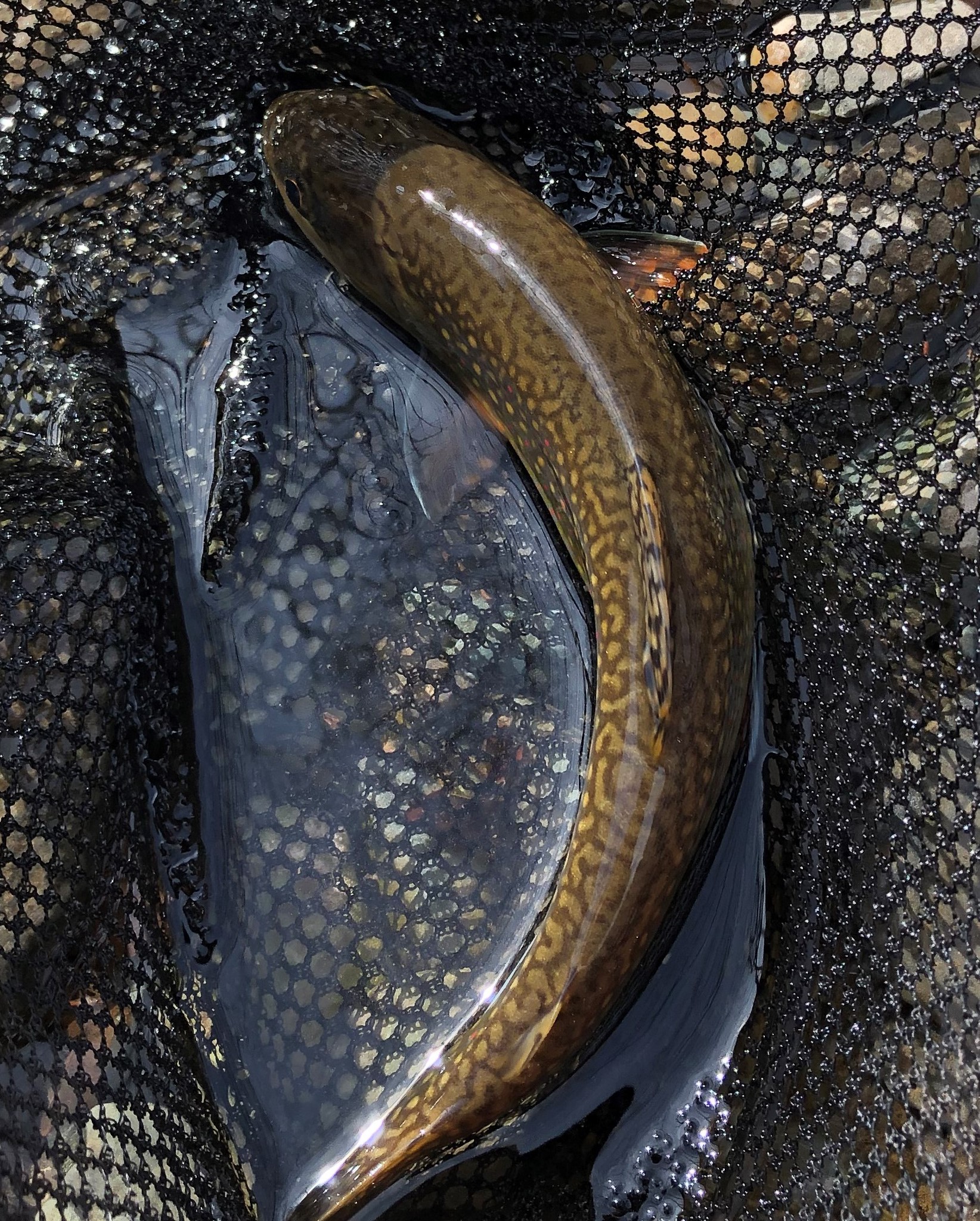If you want to learn how to catch more Brook Trout then you’re in luck. Often, you probably only need to make a few small changes to your fishing tactics. It can be as simple as wearing darker colors, choosing smaller flies, or just learning a new cast.
1 – Choosing your Gear
As anglers, we all know we have too much gear. Personally, it’s beginning to become a problem. I’ve learned that most of my gear can stay at home when I’m chasing Brookies. All that I need is listed out below.
Camo/ Dark Clothes
If you want to wear bright red, neon yellow, or blaze orange when you’re out on a trout stream then I say more power to you. However, when you wear those bright colors there’s a better chance of you spooking a run or a pool.
A dark shirt or camo is the best way to go and will help ensure that you are staying as concealed as possible. These are very spooky fish and one glimpse of something bright will send them back into hiding.
Floatant
If you plan on throwing dries, which most of us do, then gel floatant or dust floatant is going to be needed. These aggressive fish could ruin a fly for the day. If you don’t have some sort of floatant on them then you’ll be drying your flies after each cast and wasting precious fish catching time.
Fly Size
This all depends on the size of your stream, and what might be hatching. My usual go-to fly when bugs are out is a size 18 Parachute Adams. Throw this into a few pools where you know fish are located. If nothing bites you can scale up or down on the fly. Or, you can drop a nymph off the back end of the dry.
They get made fun of by hardcore fly anglers, but a Squirmy or a San Juan worm is a great way to catch and locate fish. If nothing is hitting your dry flies then throwing a San Juan could tell you if you’re even locating fish.
Rod size
When I first started all I had was a 9′ 5wt. I used it for everything from Rainbows, to Bass, to Brookies. It was too much rod for such small flies and I didn’t know any different until I started using a 3wt. The loud splats that used to spook pools basically vanished overnight.
Lighter rods and lines will help you throw those smaller flies with precision and with an increased touch. If all you have is a 5wt then keep grinding and making it work. Once you’re ready to switch it up though you’ll be able to tell a huge difference.
Leader and Tippet
These are skittish fish that live in clear water. So, if you want to maximize the amount of trout you’re catching then you’ll need to keep it light. 5X-6X should be the norm. If you’re throwing anything subsurface then fluorocarbon should be used. All dries should be monofilament.
If the water is dingy from rain then you might be able to get away with throwing 4X.
2 – Fish all the Water you can
Don’t overlook pools, runs, or anything that you would describe as “fishy”. If you think a fish might be in there then you should figure out a way to cast to it. Not hitting every spot as you move upstream will cost you fish in the long run.
3 – Learn Different Casts
Piggybacking on the above section, it can be difficult to get a fly out to every spot you see. Trees, rocks, and bushes could all be in your casting path. Be prepared to roll cast, throw sidearm, and bow and arrow cast. Practicing these in your yard or a park before heading out ensures you’ll be able to put a fly right where you want it.
4 – Take a Hike
The further back you hike the less pressured the fish are going to be. Be prepared by wearing comfortable shoes and by having food and water handy. These long hikes take time, but they can often produce some of the better trips.
Footwear
Choose the boots you’re most comfortable with. This could be wading boots, sandals, or even tennis shoes. Neoprene booties are great if you plan on using wading boots. Most gear companies even make socks specifically for wading. This is is just going to make your trip more comfortable and the more comfortable you are the longer you’ll spend on the water.
5 -Stealth
Like we mentioned earlier about wearing dark clothes, being stealthy could be the difference between spooking a pool or pilling out a couple of fish. Keep your fly line off the water as much as possible and work a pool from back to front.
Crawling, crouching and kneeling are all a part of the game so getting a little wet might be necessary. That being said, you don’t always have to army crawl. Just make sure you move slowly and that will make all the difference.
Final Thoughts
Often you’ll find that the smallest little thing can change our fishing performance. I’ve found that the items listed out above have helped me the most. What do you think? Anything I missed? Comment below and let me know.



